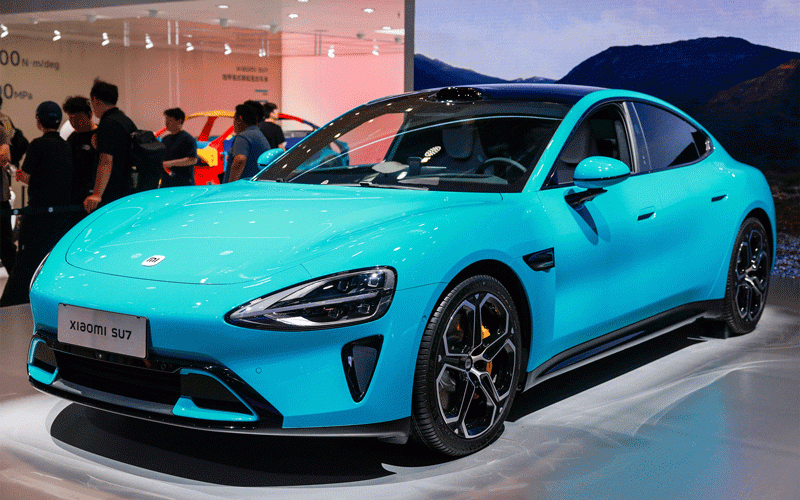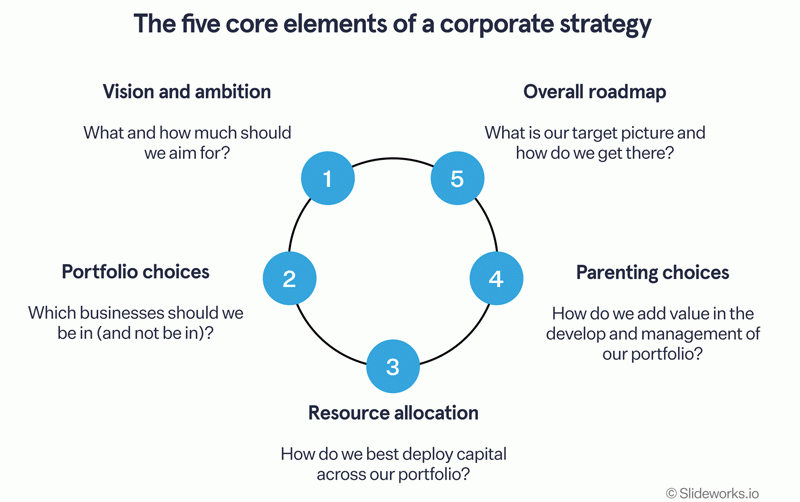
IN an article I published in 2020, I argued that China would overtake the rest of the world as the world's largest automaker by 2035. In this matter, I will not budge.
In the time leading up to then, they may even become the leading automaker. The reason is that, compared to more renowned companies, they provide superior vehicles in terms of affordability without sacrificing quality in areas like comfort, functionality, technology, luxury, or performance.
Take a look at the Geely Mix, Xiaomi SU7, MG ZS, Haval Jolion, and GWM Tank 500 for 2024. This is just scratching the surface, and it is fair to say that no company is immune from the rise of Chinese automotive manufacturers.
As a more budget-friendly substitute for formerly prominent brands in Europe, Japan, and Korea, Chinese automobiles are soaring to the top of global sales lists.
We have merely scratched the surface of what is to come, judging by the 2024 Beijing Auto Show.
I am not just referring to sheer quantity, either. While it is true that MG is now a top 10 brand in several countries and GWM is making serious inroads in Zimbabwe, what really stood out was the wide variety of high-quality items shown by both well-known companies and some you have never heard of.
Of Bakkies
It is possible that by 2026, China will have produced more bakkies for the globe than Thailand. The global market is seeing an influx of SUVs and electric vehicles manufactured by BYD, GWM, MG, and others. The P-Series is growing in Zimbabwe. On our roads, you can easily see Haval.
- The brains behind Matavire’s immortalisation
- Gweje relishes fashion achievements
- Red Cross work remembered
- All set for inaugural job fair
Keep Reading
Sales of electric vehicles are on the rise in Southern Africa. Chinese manufacturers lead the industry. On Harare roads, you may see BYDs. The town's buzz, all electric GWM ORA 03, is also present.
Due to their relatively sluggish model cycles and overly conservative design choices, "legacy" companies like BMW, Mercedes-Benz, Ford, Mitsubishi, and Toyota—often disparagingly referred to as clinging to a bygone era—face this issue.
While the Chinese are always releasing new models, most of these more established manufacturers will have versions that are out of date.
Even when traditional manufacturers produce a lot of facelifts, the Chinese do not depend on them at all; instead, they provide us with completely new versions.
For example, GWM's Haval SUV brand has been around for a few years but has produced several iterations of new models. Selling in more than 30 countries, its line-up has expanded from one model to ten. Combustion cars, hybrid electrics, and plug-in hybrids are now all part of its lineup.
This is ignored by conventional manufacturers. Some people havenot moved on from the days when they disapproved of Chinese goods. Some executives from more established automakers I have spoken with at auto events still have a dim view of Chinese automakers, even going so far as to claim that Chinese products are inferior and cannot compete with theirs. They still claim that their focus is on a different market, and they manufacture superior products than the Chinese.
That was in the past; the situation has changed since then. Some of them actually do not know that their products are manufactured in China.
They are producing high-quality goods. In order to stay competitive, it is now essential for every local car dealership to carry high-quality Chinese cars. The Chinese cars could become their cash cows sooner than they think.
Additionally, GWM is not alone
Haval has nothing to fear from having the current H6, its upgraded version, and a new generation sold side by side.
Large Chinese corporations aren't scared to shatter the mould of "traditional model cycles"; they are not concerned with making and selling the current generation of cars alongside their facelifts and the future generation of vehicles.
This allows them to swiftly react to client input and make on-the-fly pricing adjustments. Looking for a more affordable vehicle? I can help you with that.
Just look for an MG or a Haval. Are you looking for a more expensive model with a hybrid powertrain and next-generation interior technology? Are you kidding me? They also possess one of those.
As this is happening, established brands will be frantically planning the replacement of their best-selling products. Prior to their debut, their businesses need to consider the European market. They end up with two models on the market: one is supposedly too costly to upgrade for the ASEAN market, while waiting for a more desirable one in Europe may take years.
With their vast financial resources, the Chinese can launch a multi-model assault on any market. In addition, their local market is enormous.
Other than the Nio ET-5
At Beijing Auto, the stunning Nio ET-5 was on display. The days of low-quality knockoff automobiles made in China are clearly past. An all-electric competitor to the Model 3, the ET-5 boasts cutting-edge hardware, software, materials, and design.
This will compete with Tesla. On top of that, they have an SUV and a station wagon version.
It is also clear that other Chinese automakers are competing head-on with Tesla, not just Nio. A great number of others exist.
SAIC, the owner of MG, dedicated an entire booth to its high-end dedicated-electric IM brand, showcasing some truly stunning automobiles.
Even though they may not yet possess the refinement and composure of Tesla or Nio, if they can undercut their competitors on price, they will certainly compete in the competitive Western markets.
Options like the LDV T60 and GWM Bakkies arenot exactly flying off the shelves right now. Keep in mind that this is just a small sampling of what will soon be accessible on global marketplaces.
With a dramatic increase in both the quantity and quality of off-road vehicles available, camping and off-roading have become popular hobbies in China. This Chinese growth will be good for everyone.
At the auto show, it seemed like Chinese competitors were not hesitant to bring a plug-in hybrid or all-electric alternative to market, in contrast to the long-dominant Japanese automakers, who are having a hard time electrifying their mostly diesel products. Even though BYD's bakkie wasn't present at the exhibition, the company's Fang Cheng Bao PHEV off-road SUV was.
Additionally, they were remarkable due to their high-quality materials, user-friendly software, and ridiculously high-power outputs (500kW/760Nm from a dual-motor plug-in hybrid powertrain). In other words, these are the same attributes that initially established BYD, MG, and GWM as household names in Africa and Asia. And how much is it? The price starts at the equivalent of US$64600 on the Chinese market!
The next year will test the resilience of the off-road segment with the introduction of new models from GWM Tank, BYD bakkies, and a new entrant from JAC. Zimbabwe is already home to Tank and JAC.
The hatchback
Though the hatchback market isnot too popular, let us take a look at it. China has already won this battle with MG's modest but affordable MG3 selling well in Asia, and Japanese and European manufacturers have all but given up on it.
The event also made it clear that Chinese manufacturers have the potential to dominate this market. While almost every manufacturer showcased an impressive electric vehicle at the Beijing show, the small hatchback market and lack of interest in right-hand drive regions seem to discourage them.I am not sure how much longer this trend will persist.
Many consumers will prioritise purchasing automobiles from China in the future due to a confluence of factors.
They outperform the competition in terms of pricing, speed of delivery, and meeting the needs of customers who arenot picky about brands.
Europe is considering increasing tariffs to shield its own car sector against cheap imports from China in all three areas, making export markets in Asia and Africa even more crucial. When it comes to volume, the two regions much outstrip Europe. If Europe doesnot wake up soon, the cheese will have moved.
My decision
Over the last several years, I have switched to using Xiaomi phones, a Chinese brand. It holds its own against Apple and Samsung and better in some aspects.
I am completely smitten after trying it out. Picture this: They have just released their own vehicle, the Xiaomi SU7, to compete with Tesla. Known mostly for its smartphones, the Chinese company Xiaomi has succeeded where Apple failed.
It has produced its first electric vehicle and reportedly maintained a price tag as low as US$26000.
Not content to rest on its laurels, the Xiaomi SU7 also has an impressive set of internal components.
Acceleration testing showed that the SU7 Max could reach 100 km/h in an exciting 3,24 seconds, much ahead of its competition. This places it ahead of the Nio ET5 LR (3,83 seconds) and the Tesla Model 3 LR (4,62 seconds).
Am I still not persuaded? Take a look at the data: Chinese-made automobiles (which, as a reminder, also include Volvos, Polestars, BMWs, and Teslas) surpassed Korean-made vehicles in 2022 and 2023, and it will only be a matter of time until Chinese-sourced 4x4s surpass Thailand-sourced bakkies as well.
Is it possible that China will overtake the United States as the number one automobile supplier by the decade's end? It wouldnot surprise me in the least.










